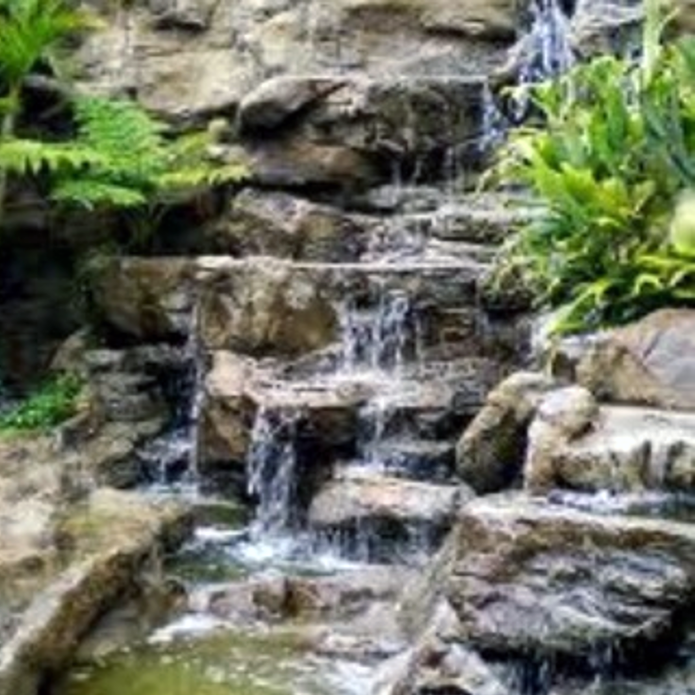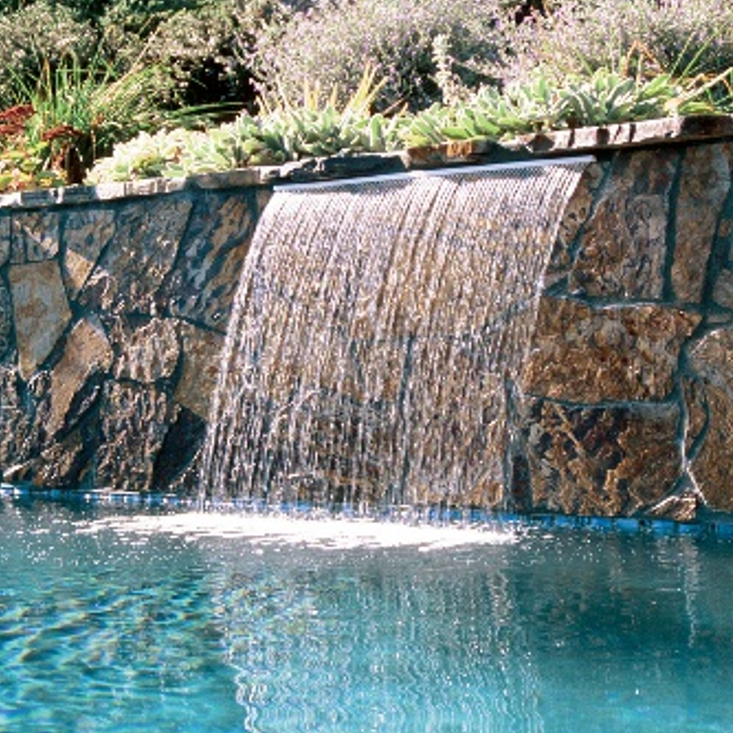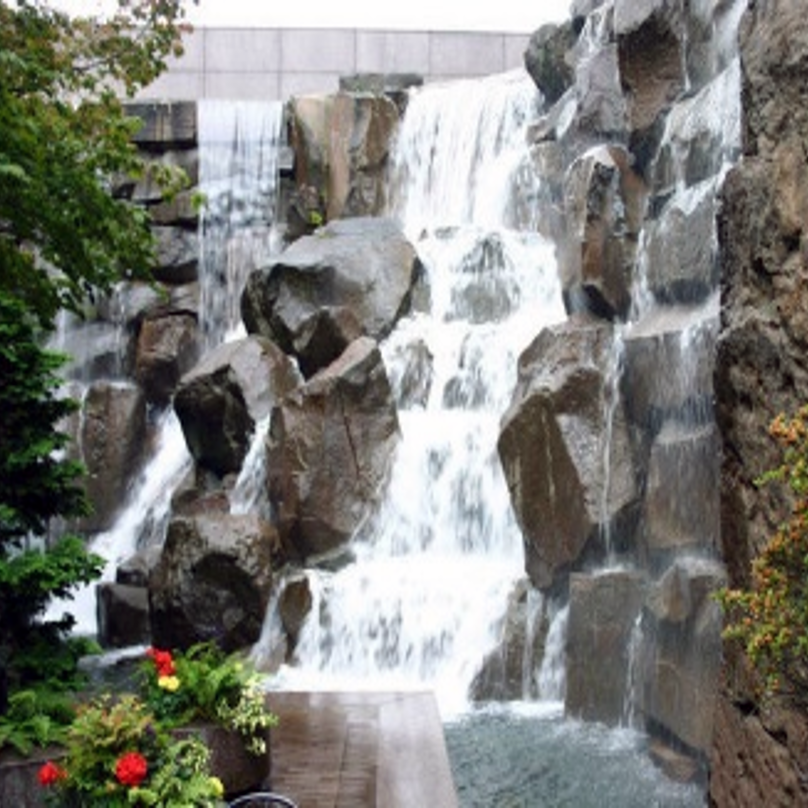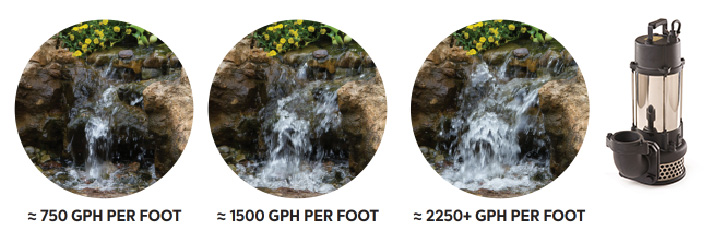Choose the Ideal Water Pump for Stunning Waterfalls
What does the perfect waterfall look like to you? A soothing soft trickle, down moss-covered rocks? A loud raging river of turbulent, frothy white water covering jagged boulders? Or maybe something in between?



The first step in choosing the correct waterfall pump is picking the sound and visual effect that you desire. Let’s break it down into 3 Waterfall Categories:
1. A ‘Trickle’ Waterfall covers most of the waterfall stones, but not necessarily all of it.
A single flat waterfall stone (called a weir) would not be completely covered by pond water giving the fall a ‘beaded curtain’ look. This type of effect requires approximately 750 gallons per hour (gph) of water flowing over the weir if it is one foot wide; 1,500 gph for 2’ wide; 2,250 gph for 3’ and so on.
2. A ‘Sheer Sheet’ Waterfall fully covers a single flat waterfall stone.
The pond water needs to be 1/2” to 3/4” thick in order to cover most weirs, or flat stone waterfalls. This type of effect requires approximately 1,500 gallons per hour (gph) of water flowing over the falls if it is one foot wide; 3,000 gph for 2’ wide and so on.
3. The ‘Niagara’ Waterfall will create white, frothy pond water when the waterfall is made up of round and angular stone built in a cascade.
A ‘Niagara’ Waterfall requires approximately 2,250 gallons per hour (gph) - or more, of water flowing over the weir if it is one foot wide for an inch or more of depth to the falls; 4,500 gph for 2‘wide and so on.
These 3 categories, or types of waterfalls each produce its own type of sound which can be tweaked by adjusting and moving the stone and boulders in and under the waterfall.
- A Cave or Grotto built behind the waterfall will amplify the sound as it moves forward. It is also a great place to install pond lighting. Pond lights give depth and dimension to the water feature itself.
- Having a Collecting Pool directly under the falling water will also affect the sound that your waterfall makes. You will get more sound from water hitting water than water hitting rocks and a lot less splash.
- The deeper the pool, the lower the sound is and the further it will carry.
- The shallower the pool, the higher pitch the water will have.
- A Cascade will cause water to bounce back and forth between the rocks, hitting itself as it falls. This is the “white, frothy water” we mentioned above. A cascade will produce a lot of sound based on the flow rate of your waterfall pump and how far your water way runs.
Once you have decided on the gph of water needed to create the look and sound you desire, we need to explore the factors that help determine what size hose you should use. Those factors are as follows:
- Length: The longer the run, the more friction that builds up inside the hose. Other factors that slow the water down (reduce the flow) are fittings; such as elbows, tees and couplers. A long run is okay if you compensate with a larger inside diameter of hose and a larger pump.
- Height: The difference in elevation between the surface of pond water and the top of the weir is what you need to measure here.
- Direct Drive pumps (like Atlantic’s A-Series and L-Series) are designed with lots of power to pump the pond water up to higher elevations.
- Mag-Drive Pumps (like Atlantic’s MD-Series) and A-Synchronous Pumps (like Atlantic’s TT-Series) are designed to pump larger amounts of water but for lower elevations.
- Flow Rate: Determining your water flow rate follows the same parameters as determining what size hose to use. A higher flow rate will demand an increase on the inside diameter of the hose that you need.
Adding all of these factors together, starting with your sight and sound, will better help you with determining the perfect pump for your perfect waterfall. Using the correct pump for your water feature application will help reduce maintenance, save energy, prolong the life of your pump and save both money and aggravation in the long run.
Check out Atlantic Water Garden’s Pump Guide or stop into our store for personal help with choosing the correct pump for your pond or water feature.
